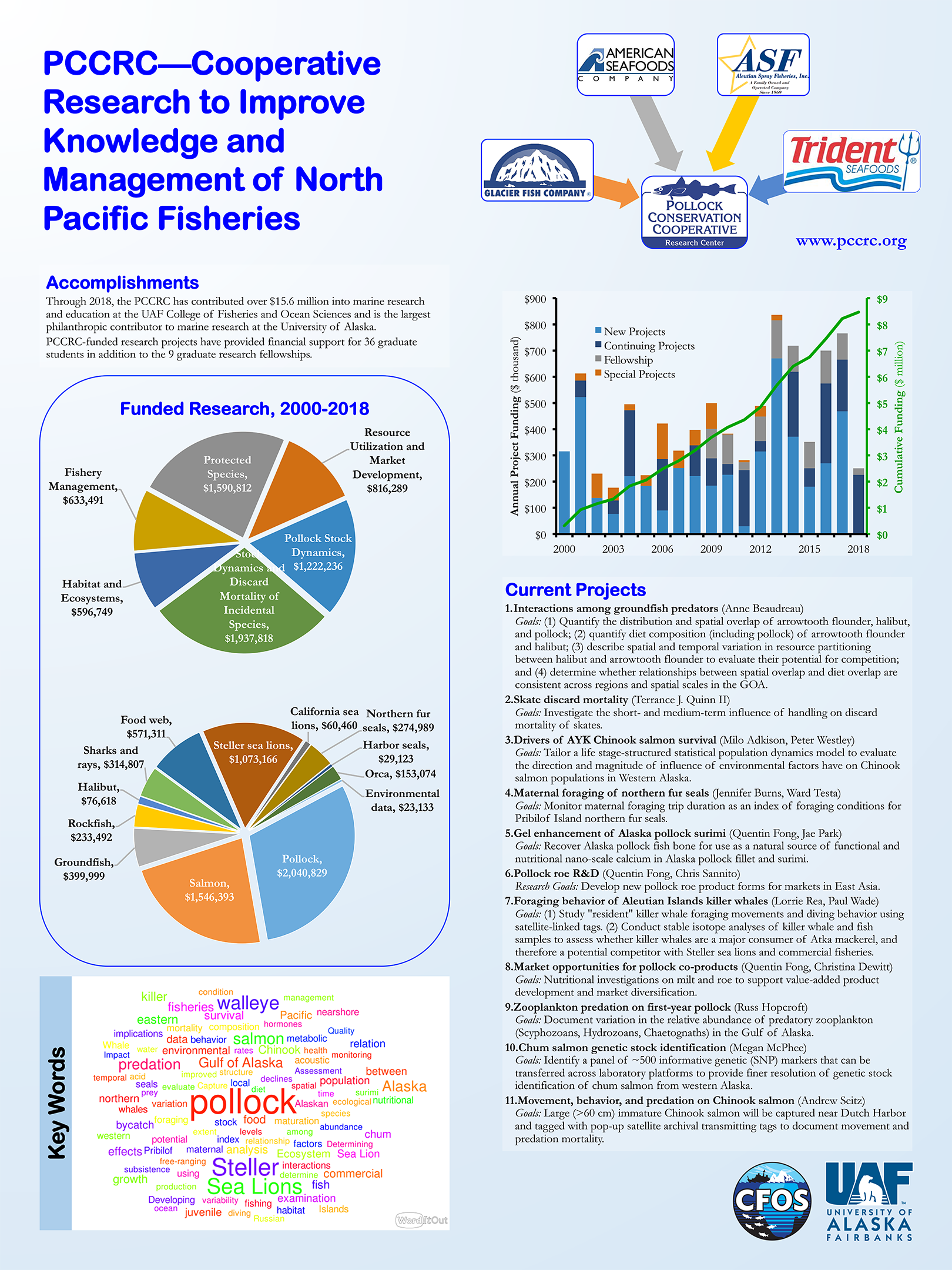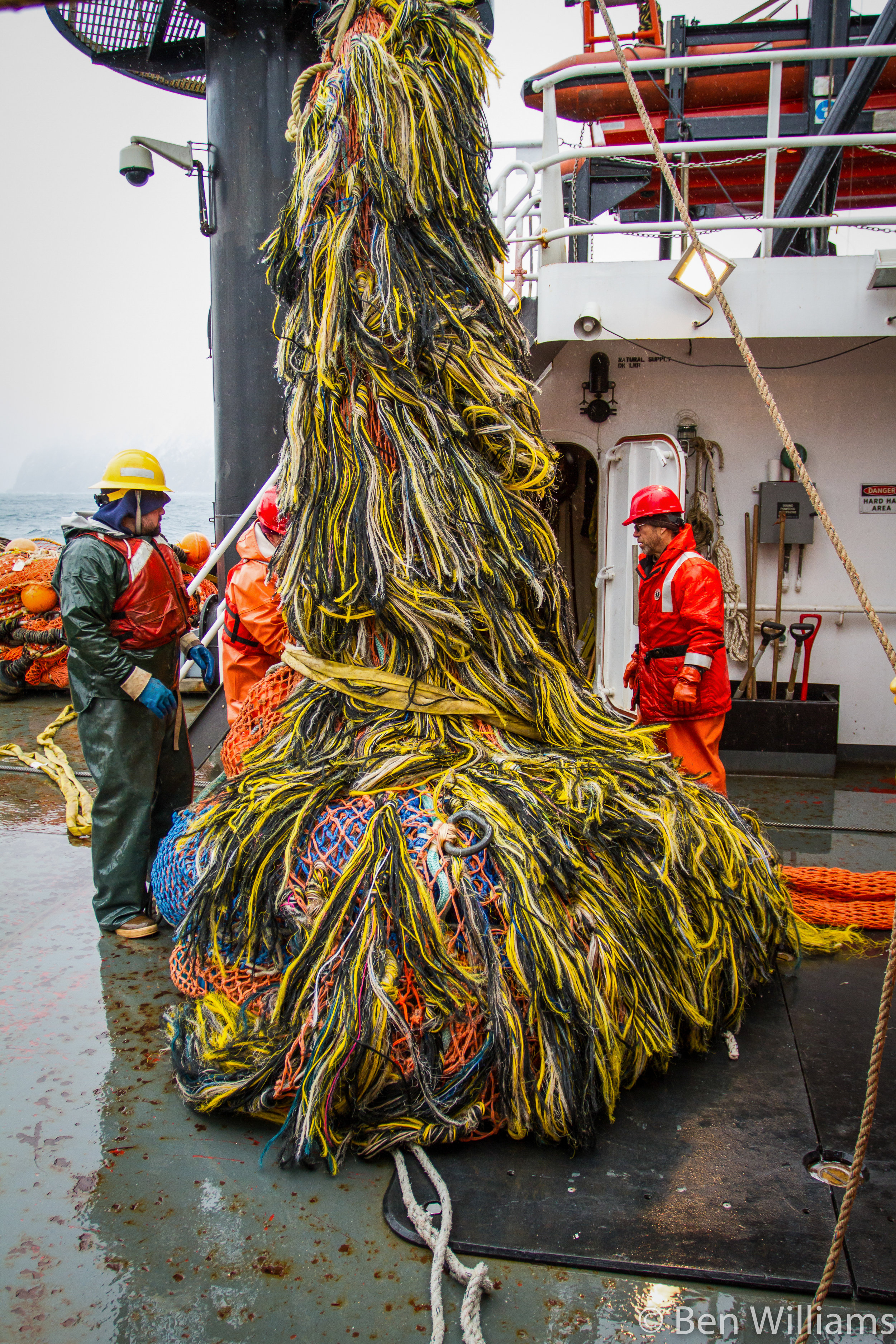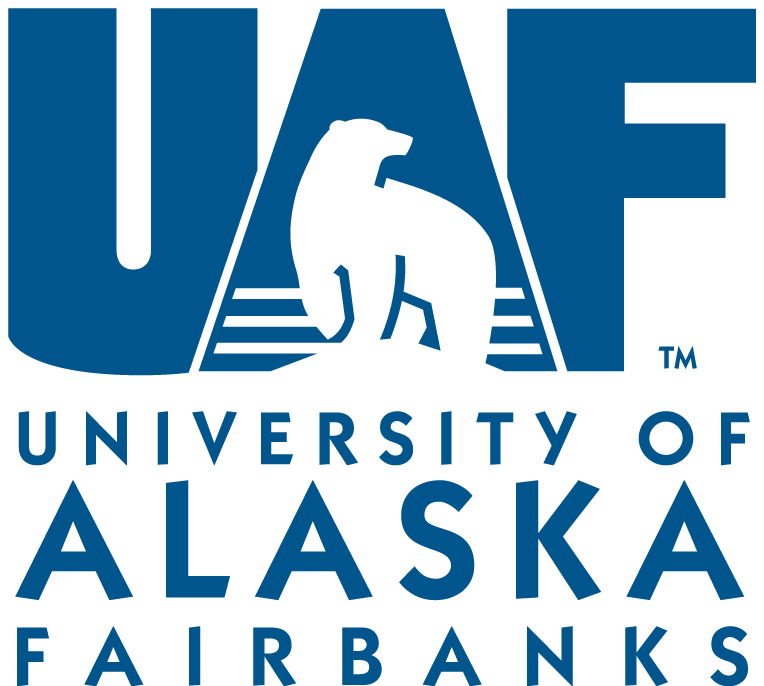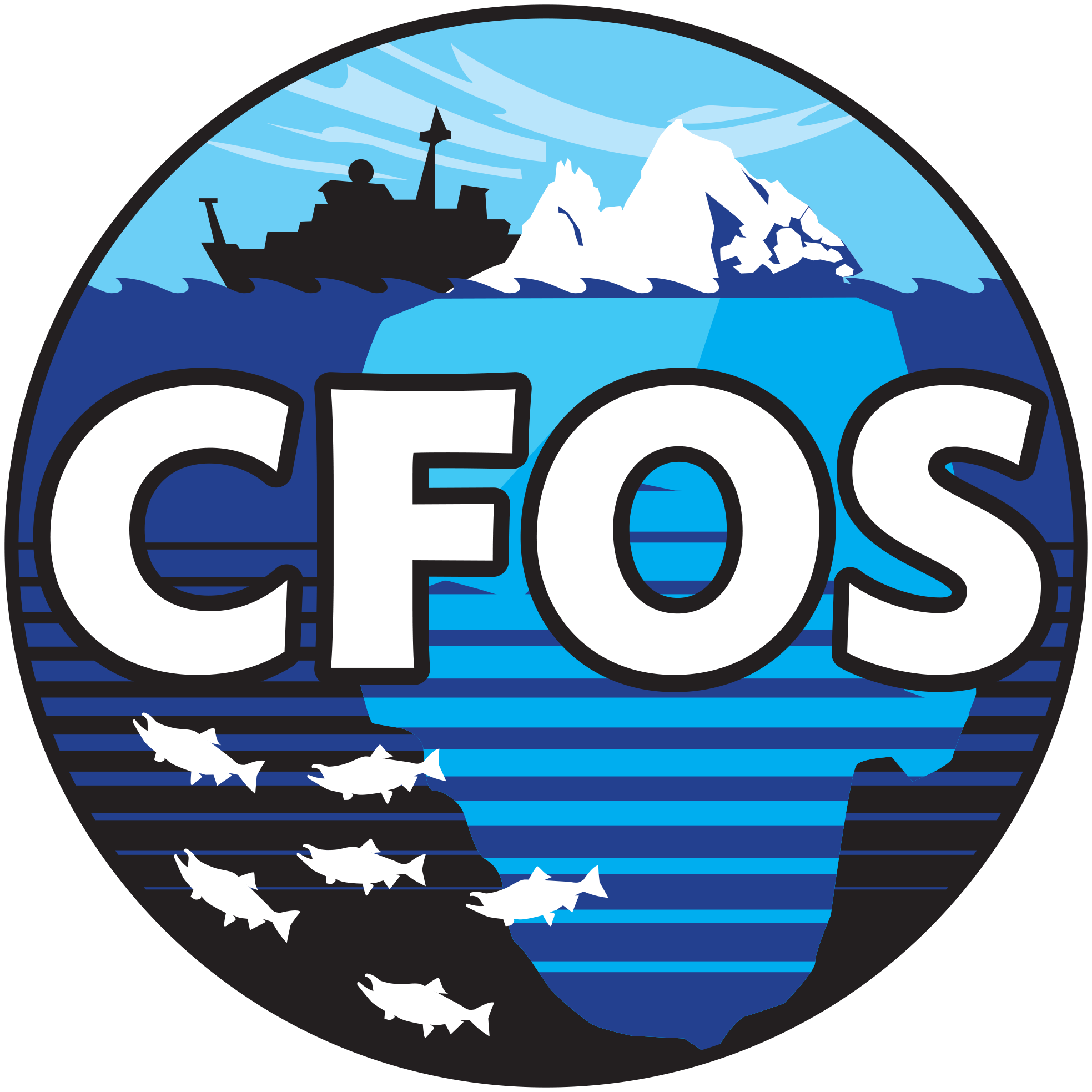Our Mission
In 1999 the At-Sea Processors Association formed the Pollock Conservation Cooperative (PCC) with the goal to further improve conservation and utilization of Alaska's marine resources. Cooperative fishing among the pollock catcher/processor companies led to cooperative funding of marine research and a partnership between the PCC and UAF’s College of Fisheries and Ocean Sciences. The Pollock Conservation Cooperative Research Center (PCCRC) was established in February 2000 to improve knowledge about the North Pacific Ocean and Bering Sea through research and education, focusing on the commercial fisheries of the Bering Sea and Aleutian Islands.
The PCCRC funds investigators and students conducting research on pollock, salmon, and other groundfish species, as well as the fishing of and fisheries for these species. The PCCRC also funds research on habitat and ecosystems associated with these species, fishery management, marine mammals, resource utilization, marine resource economics, and policy. Additionally, the members of the PCC established the Ted Stevens Distinguished Professorship of Marine Policy at the College of Fisheries and Ocean Science. This position is currently held by Dr. Keith Criddle.
““[The] PCCRC continues to be an important advocate for conservation and sustainability of Alaska’s marine resources. Moreover, they are underwriting the training of tomorrow’s managers.””
Research Priorities
Fisheries Management and Incidental Catch (of FMP or PSC) Species — Research dedicated to improved biological data on species incidentally caught in North Pacific groundfish fisheries (sharks, skates, octopus, squid, sculpins, crab, halibut, salmon, etc.) to better quantify potential effects on those stocks and to improve estimates of discard mortality. Research dedicated to evaluating current fisheries management strategy and the potential need for regulatory flexibility to adapt to ever-changing environmental conditions.
Pollock Biology — Research dedicated to improved biological data on the pollock stock.
Resource Utilization and Market Development — Research is desired to create additional products and/or derive greater product value from existing harvests.
Habitat, Ecosystems, and Protected Species — Research dedicated to evaluating habitat and ecosystem considerations and investigating the factors influencing the sustainability of protected species. Of primary interest to PCCRC is the Pribilof Island fur seal stock. However, research on Steller sea lions and other Endangered, Threatened, or Protected species will also be considered.
Drawing of Walleye pollock by H.L. Todd in Fisheries and Fishery Industries of the United States: Section I, Natural History of Useful Aquatic Animals, Plates. Image from the Freshwater and Marine Image Bank of the University of Washington.
Advantages of PCCRC Funding
Support for applied research - Industry participation in setting research priorities, reviewing Letters of Intent (LOI), and Proposals.
Non-federal - Awards can be used to satisfy match requirements for federal and state research programs that require match.
LOI review - Letter of intent application process requires far less time investment than a full proposal.
Student fellowships and research assistantships - Funding for graduate student led projects (fellowships) and graduate student support projects (research assistantships).







